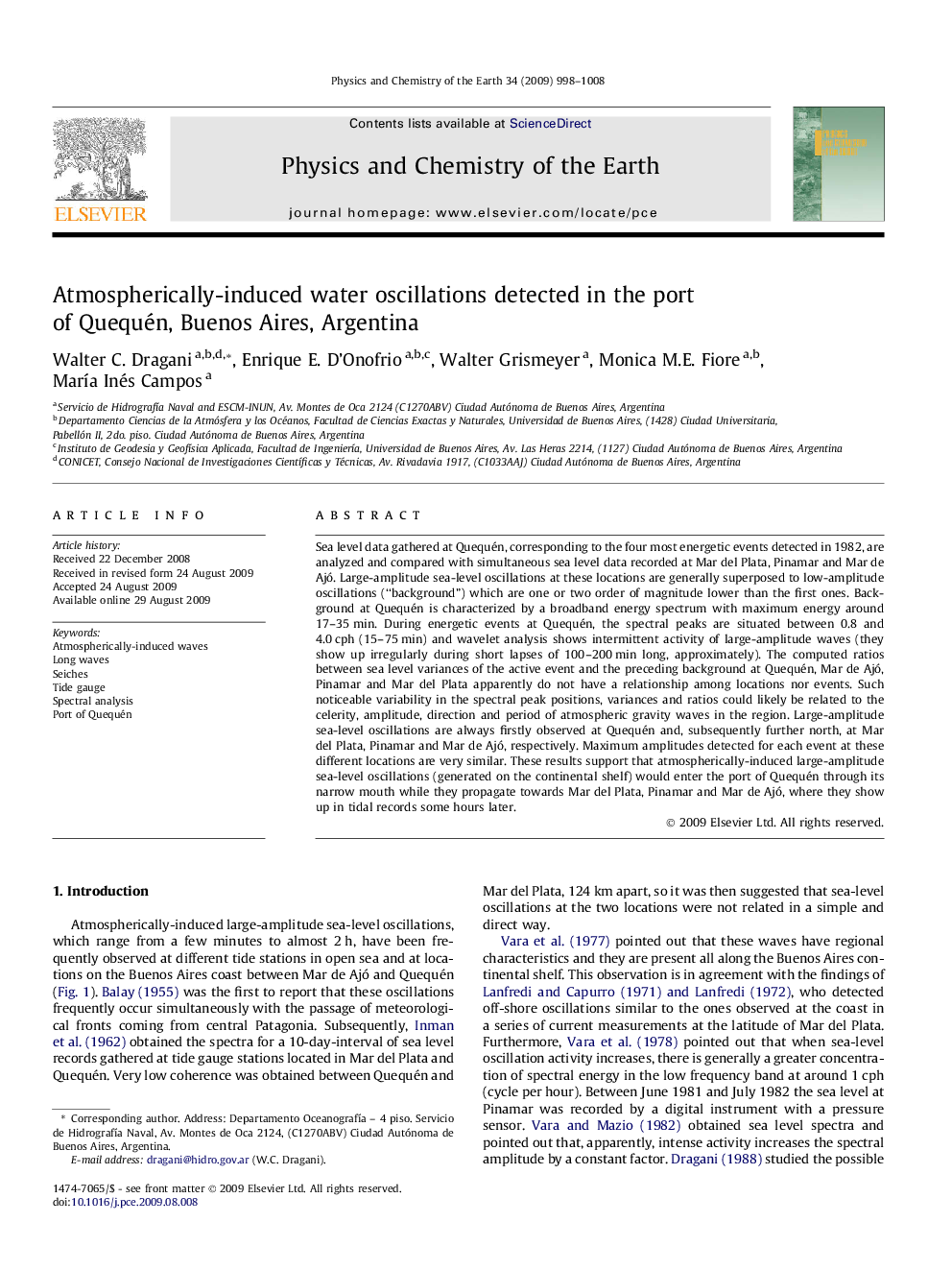| کد مقاله | کد نشریه | سال انتشار | مقاله انگلیسی | نسخه تمام متن |
|---|---|---|---|---|
| 4721538 | 1639387 | 2009 | 11 صفحه PDF | دانلود رایگان |
عنوان انگلیسی مقاله ISI
Atmospherically-induced water oscillations detected in the port of Quequén, Buenos Aires, Argentina
دانلود مقاله + سفارش ترجمه
دانلود مقاله ISI انگلیسی
رایگان برای ایرانیان
کلمات کلیدی
موضوعات مرتبط
مهندسی و علوم پایه
علوم زمین و سیارات
ژئوشیمی و پترولوژی
پیش نمایش صفحه اول مقاله

چکیده انگلیسی
Sea level data gathered at Quequén, corresponding to the four most energetic events detected in 1982, are analyzed and compared with simultaneous sea level data recorded at Mar del Plata, Pinamar and Mar de Ajó. Large-amplitude sea-level oscillations at these locations are generally superposed to low-amplitude oscillations (“background”) which are one or two order of magnitude lower than the first ones. Background at Quequén is characterized by a broadband energy spectrum with maximum energy around 17-35Â min. During energetic events at Quequén, the spectral peaks are situated between 0.8 and 4.0Â cph (15-75Â min) and wavelet analysis shows intermittent activity of large-amplitude waves (they show up irregularly during short lapses of 100-200Â min long, approximately). The computed ratios between sea level variances of the active event and the preceding background at Quequén, Mar de Ajó, Pinamar and Mar del Plata apparently do not have a relationship among locations nor events. Such noticeable variability in the spectral peak positions, variances and ratios could likely be related to the celerity, amplitude, direction and period of atmospheric gravity waves in the region. Large-amplitude sea-level oscillations are always firstly observed at Quequén and, subsequently further north, at Mar del Plata, Pinamar and Mar de Ajó, respectively. Maximum amplitudes detected for each event at these different locations are very similar. These results support that atmospherically-induced large-amplitude sea-level oscillations (generated on the continental shelf) would enter the port of Quequén through its narrow mouth while they propagate towards Mar del Plata, Pinamar and Mar de Ajó, where they show up in tidal records some hours later.
ناشر
Database: Elsevier - ScienceDirect (ساینس دایرکت)
Journal: Physics and Chemistry of the Earth, Parts A/B/C - Volume 34, Issues 17â18, 2009, Pages 998-1008
Journal: Physics and Chemistry of the Earth, Parts A/B/C - Volume 34, Issues 17â18, 2009, Pages 998-1008
نویسندگان
Walter C. Dragani, Enrique E. D'Onofrio, Walter Grismeyer, Monica M.E. Fiore, MarÃa Inés Campos,